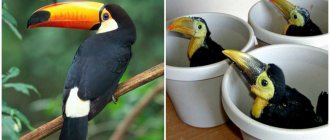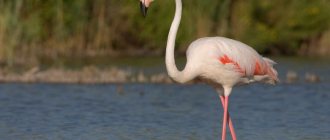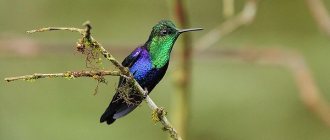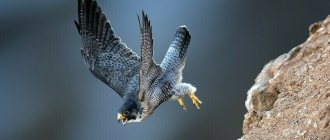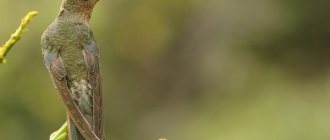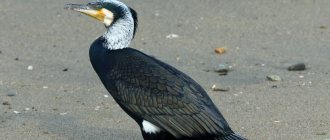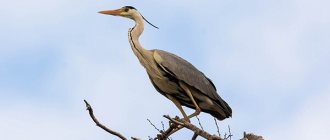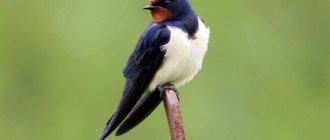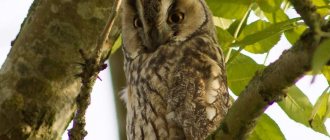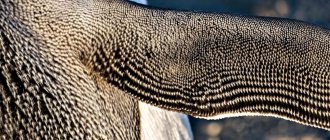The toucan is an inhabitant of the tropical and highland forests of Central and South America. The birds are best known for having one of the largest and brightest beaks in nature. These exotic birds are also distinguished by their trusting nature, thanks to which they easily get along with humans and are kept as pets.
Toucan is a bright representative of Central and South America
Description of the toucan and origin of the name
The toucan is a bird of the toucan family of the woodpecker order. The closest relatives of these birds are woodpeckers, puffbirds, cabezons and toucan beardies.
The Latin name for toucans is Ramphastos, and in most countries of the world the name of these birds is consonant with Russian: in Portuguese the bird is known as tucano, in English - toucan, in German - tukan.
The explanation for the origin of the name of these bright-beaked birds is simple - the birds shout loudly “toko”, “tocano”, which was transformed into “toucan”. Toucans are also sometimes called pepper-eaters.
The bearded toucan is a relative of the toucans.
Scientific classification
- Kingdom: Animalia (animals)
- Phylum: Chordata
- Class: Aves (birds)
- Order: Piciformes (woodpeckers)
- Family: Ramphastidae (tucans)
- Genus: Ramphastos (toucans)
There are 11 species and 9 subspecies of toucan. The great toucan (Ramphastos toco), found in the lowland Amazon rainforest, and the brown-backed toucan (Ramphastos ambiguus swainsonii), found from Honduras to Venezuela, are the largest species of the genus. The remaining species are smaller in size and relatively gregarious.
Photo: Travel to Eat
Appearance of a toucan
These birds are quite large in size: body length reaches 25–50 cm, the weight of an average adult individual can reach 400–500 g.
INTERESTING FACT. The largest representative of this family is the great toucan or toco toco, whose body weight is almost 900 g and length is 75 cm. The smallest of the toucans is the letter arasari, whose average weight is only 130 g.
The toucan's body is dense and elongated. The head is also oblong, merging with a thick, not very graceful neck. The birds' wings are short, but quite wide, and consist of 11 primary flight feathers. Despite the fact that these birds do not like to stay in the air for a long time, the toucan looks very impressive in flight.
Most members of the family have a short tail with a straight cut. But there are also individuals with an elongated tail (for example, the Derby toucan).
Toucans have strong, four-toed legs. The fingers are spread out in pairs - two pointing forward and two pointing back. This arrangement makes it difficult for the bird to walk on a flat surface, but allows the bird to hold tightly to the branches. The paws are colored blue-gray or light green.
Rainbow toucan in flight
In some species of toucans, the plumage is not the most noticeable: in a large toucan, the main part of the body is painted black, only the underside of the neck and the area above the tail can be white or yellow. But most members of the family can compete even with parrots in the brightness of their feathers: in nature there are toucans whose colors combine green, light green, yellow, blue and red.
Another noticeable feature of the toucan is the shade of the skin around the eyes. This part of the bird’s body is unfeathered and is most often colored orange, light green or yellow. By the way, a bird’s iris can range from black to blue and light green.
Toucan iris coloring
Toucan and its beak
The most remarkable feature of toucans is their huge, laterally flattened beak, the length of which can reach from 15 to 25 cm. Despite its large size, the toucan's beak is light (no heavier than that of other bird species), because its inner part consists of foam-like, air-bearing bone tissue. The top of the beak is covered with keratin, which gives it strength. The beak has small serrations that help the bird in peeling and eating fruits.
Also, the beak of these birds plays an important role in thermoregulation: many blood vessels pass through the foam-like cavity, and when the body overheats, the beak absorbs excess heat due to blood flow.
Toucan chicks have a different beak shape - its lower part is longer than the upper. Thanks to this structure, it is easier for parents to put food in the mouth of the young.
The bright color of the beak is also noteworthy. Depending on the type of bird, the color can be orange, yellow, light green with blue hues, and even deep burgundy.
The toucan has a long, narrow tongue in its mouth.
A large and bright beak is a distinctive feature of the toucan
Home maintenance
Keeping a toucan requires simple maintenance, the main thing is enough spacious space. Figuratively speaking, they do not need a spacious cage, but a small room.
They move quite a lot and love to scream loudly. They get along well with other birds; you can have any parrot as your neighbor.
To recreate natural conditions as much as possible, on the upper tiers of the cage (or aviary) you need to place thick branches, ladders and passages along which the birds will run. They get used to their new owner very quickly if you show interest, communication and care in them. They are not afraid of strangers, but they are wary and may try to scare them off with a loud scream.
Please note that this is an exotic bird and a humid and warm climate is desirable. Install a humidifier, as air conditioners dry out the air.
Male and female toucan: main differences
In most species of toucans, female and male individuals do not differ, but in some representatives of the family, sexual dimorphism is slightly pronounced. For example, the female and male large toucan differ in body size - the male weighs 150–200 g more than the female. In black-headed arasari, the male has a longer beak than the female.
Individuals of Guiana Selenidera differ in color:
- the male has a black back, head, belly and tail, green wings with an olive tint, the undertail and tip of the tail are red-brown, and there are orange-yellow feathers on the cheeks;
- The female has less rich plumage than the male, and the female has a gray chest and a red-brown stripe on the back of the head.
The male letter arasari has jet black head feathers, while the female has chestnut brown feathers.
Male and female Guiana selenidera
Characteristic
The toucan family is divided into the following genera:
- Andigenes
- Toucanets
- Arasari
- Toucans
- Seleniders
Within these genera there are 37 species.
However, the most popular is the great toucan, also called the toco.
The yellow-orange beak of the great toucan is slightly reddish on top and marked with a black spot at the end. Its length reaches 20 cm, this is a third of the toko bird’s body
Types of toucans
The toucan family includes 45 species of birds, which are grouped into 5 genera:
- toucanets (Aulacorhynchus);
- arasari (Pteroglossus);
- seleniders (Selenidera);
- Andigena;
- toucans (Ramphastos).
Let's look at the brightest and most common representatives of the family.
Emerald toucanet (Aulacorhynchus prasinus). Inhabitant of Central and South America (inhabits tropical forests from Mexico to Bolivia). The main color of the bird's plumage is olive green, but there are blue spots on the wings, tail and head. The tip of the tail is red-pink. These birds cannot boast of large sizes - the average weight of a toucanet reaches only 160 g.
Emerald toucanet - an inhabitant of Mexico and South America
Derby toucanet (Aulacorhynchus derbianus). Lives in the high mountain forests of the Andes (in Colombia, Bolivia, Ecuador and Peru). The color of the plumage is predominantly green, only under the black and burgundy beak there is a small white stripe. The bird is distinguished by a long tail.
Toucanet Derby - inhabitant of the high mountain forests of the Andes
Fire-billed aracari (Pteroglossus frantzii). It lives on the Pacific coast of Costa Rica and Panama. The head, neck, and back of the bird are black, the plumage on the belly is bright yellow, and a rich red stripe runs down the center of the belly. The lower half of the beak is black, the upper half is orange-yellow, and there is a thin light green stripe at the base.
The fire-billed aracari is an inhabitant of the tropical forests of Costa Rica and Panama.
Black-throated aracari (Pteroglossus aracari). Representatives of the species live in the rain forests of Guyana, Venezuela, Brazil, and Suriname. The color of the bird is predominantly black, only the belly is light yellow with a red stripe. The beak is also yellow and black.
INTERESTING FACT. Since 2012, the black-throated aracari has been presented at the Perm Zoo.
Black-throated arasari - a resident of the rain forests of South America
Golden-breasted andigena (Pteroglossus bailloni). Found in Paraguay, Argentina and Brazil. The plumage of the bird's back, wings, and tail is dark green with a brownish tint, but the most remarkable thing is the saffron-yellow color of the chest and head. The beak is lime-yellow with red-pink and blue spots.
Golden-breasted andigena - resident of Paraguay, Argentina and Brazil
Selenidera maculirostris. This toucan lives in the Atlantic forests of Brazil, as well as Paraguay and Argentina. The birds are very colorful: the predominant plumage color is emerald green, but there are also brown, yellow, red and blue spots. The birds got their name because of the variegated, spotted color of their beak.
The pied-billed selenidera is a toucan of the Atlantic forests of Brazil.
Blue Andigena (Andigena hypoglauca). It inhabits the humid forests of the Andes (Colombia, Ecuador and Peru). This is one of the largest representatives of the family, the bird's weight reaches 400 g. The belly and head of the birds have gray-blue or dark blue plumage, the crown of the head is black, the wings and back are brown with a greenish tint. The undertail is yellow-red and the tip of the tail is red. The beak has a combination of red, yellow and black colors.
Blue andigena - inhabitant of the humid forests of the Andes
Red-breasted toucan (Ramphastos dicolorus). Inhabits the Atlantic forests of South America. The species received its name due to the bright red plumage on the belly (the upper part of the chest is orange-yellow). The head, back and tail are pitch black, and the beak is light green or yellow-blue (black at the base).
The red-breasted toucan is an inhabitant of the Atlantic forests of South America
Rainbow toucan (Ramphastos sulfuratus). Distributed in the tropical forests of southern Mexico, northern Colombia and northeastern Brazil. The species got its name because of the bright color of the beak, which combines green, blue, orange, red, and yellow. The bird's body is covered mainly with black feathers, only the throat is rich yellow. The tail is black with a blue tint.
The rainbow toucan is the brightest-billed representative of the toucans.
Toco toucan (Ramphastos toco). The largest representative of toucans, inhabiting the tropical forests of Bolivia, Peru, Argentina and Brazil. The large toucan has a predominantly black plumage, only the throat and rump are white. The beak is bright orange with a black spot at the tip.
The toco toucan is the largest representative of the toucan family.
The beginning of the story
One day, two friends, renting the same house between them, saw a small toucan in a pet store. At that time he was only a few weeks old. He sat very quietly. As it turned out, the bird had wounds on its wing. Janelle Tsao and her friend Ariel Zarutsky fell in love with the bird at first sight. Janelle vowed to herself that she would do everything possible to ensure that the toucan recovered and lived happily. The girls took the chick home. They named him Touki. The toucan quickly recovered and settled into its new home. Now he is the real boss here.
Toucan range and habitat
These bright-billed birds live exclusively in the Western Hemisphere. The birds are common in southern Mexico and also inhabit Central America and most countries in South America:
- Colombia;
- Ecuador;
- Peru;
- Argentina;
- Suriname;
- Guyana.
The largest species diversity of toucans is in Brazil.
Habitats
Birds live mainly in lowland rainforests and tropical forests, but some species also live in high mountain areas. For example, representatives of the Andigen genus settle at an altitude of 3 km above sea level in the Andes mountains.
Toucans do not like dense forests and choose edges or sparse groves for living, while Toko toucans prefer to live in savannas. These birds are not afraid of people either; birds can often be found next to humans - in orchards or city parks.
Since toucans live in a warm tropical climate, they lead a predominantly sedentary lifestyle and do not fly away for the winter. Only sometimes birds can make small migrations in search of food, and during breeding, toucans move to forests with old trees, because these birds nest in hollows.
Brown-backed toucan in natural environment
Social structure
Photo: Desert Morocco Adventure
Toucans are social birds . They travel in flocks of up to 12 individuals, preferring to form small family groups. Toucans feed together, and an attentive sentry protects them from possible attacks by predators. During the hottest hours, the birds stay among the dense foliage and are active mainly at sunset.
Behavior and lifestyle
Toucans are very noisy, sociable birds. They prefer to lead a gregarious lifestyle, and often up to 20 adults gather in one territory.
Birds are active only during daylight hours, and they spend most of the day in tree branches in search of food. Birds rarely descend to the ground, but they also don’t really like to fly long distances—more often they make short flights between trees.
At night, birds sleep in hollows. Since their beak is soft, the toucan itself cannot hollow out a nest and occupies the natural cavities of trees or the homes of other birds. Often up to 3 adult toucans spend the night in one hollow.
Brown-backed toucan in a hollow
INTERESTING FACT. The huge beak does not interfere with the toucan’s sleep: the birds are able to turn their heads almost 180°, which allows the bird to place its beak on its back.
Toucan pose while sleeping
What does a toucan eat?
Toucans are predominantly herbivorous birds, and the bulk of their diet consists of:
- fruits;
- berries;
- nuts;
- palm fruits.
Thanks to their long beak, birds can easily reach food hanging on a high branch. And the serrations on the beak help to hold the fruit and peel it.
If there is little plant food in the toucan's range, the bird's diet includes insects, spiders, lizards, and small snakes. The birds throw them into the air, and when they catch them, they immediately swallow them. Toucans often eat the eggs and chicks of other birds; sometimes even adult small birds can become food.
We invite you to watch a short video about a Toco toucan eating a papaya fruit.
Eating habits
Photo: bioGraphic
Toucans are omnivores , which means they eat both plants and animals. Their diet consists mainly of fruits, including figs and cherries, which they swallow whole. They will happily feast on snakes, lizards, tree frogs (small frogs), insects and the eggs of other birds.
Toucans inadvertently help plant new fruit trees: the seeds they consume pass through their digestive system and germinate where they defecate.
Populations and species status
Toucan populations are numerous, and most species are widespread in nature. According to scientists, birds live on an area of almost 10 million km². But there are also representatives of the family, the number of individuals of which is declining at a rapid pace.
- Yellow-browed toucanet. Found only in the rainforests of the Andes in Peru. This toucan is listed as an endangered species in the Red Book - today there are no more than 2,500 individuals in the wild.
- Flat-billed andigena. It is also a native of the Andes, but inhabits the forests of Ecuador and Colombia. Due to the cutting down of trees in these areas, the range of the toucan and, accordingly, the number of individuals are declining.
- Ariel toucan. Distributed in Brazil and central Bolivia, as well as on the Caribbean island of Trinidad. The birds are a vulnerable species because their natural habitat is being converted by humans into agricultural land. The second reason for the decrease in numbers is that these birds mate with other species and form hybrids, thereby destroying their own species.
- The white-breasted toucan is a resident of the Amazon rainforest. The number of birds is declining due to deforestation, and also because these birds have tasty meat and are hunted. The white-breasted toucan is listed as vulnerable on the IUCN Red List.
The ariel toucan is a vulnerable species of the toucan family.
Natural enemies in the wild
Despite the large size of the birds, they often become victims of predators. The natural enemies of the toucan in nature are:
- large snakes (for example, anaconda);
- wild cats;
- birds of prey (harpies).
Toucan eggs are eaten by snakes, coati raccoons, and weasels. In addition, the enemies of toucans include people who hunt birds for their feathers and meat.
Their bright plumage helps birds protect themselves in the wild - birds masterfully blend into their environment.
The South American harpy is a natural enemy of the toucan
How long do toucans live?
These birds can exist in their natural environment for an average of 15–20 years. And the recorded maximum lifespan of the Toco toucan was 26 years.
The age of toucans at home and in zoos increases significantly - with proper care in captivity, birds can live up to 50 years.
Communication
Toucans are very noisy birds. Towards evening they gather together and shout in unison . Their vocal repertoire consists of harsh croaks, yelps, squeals, wheezes and shrieks. Some of the larger species produce a series of almost musical calls at dawn that may function as a way of marking personal territory.
Photo: Mauricio Guardiano
The calling toucan sharply raises its head, moving from side to side and quickly waving its tail down/up.
How toucans reproduce and what kind of offspring they produce
Toucans are monogamous birds. The mating season for these birds begins in early spring. The male attracts the female not very gracefully - he throws some fruit to her. If the female accepts it, the pair separates from the main flock and looks for a place for a nest.
As mentioned, toucans nest in hollows. Additionally, the birds do not arrange it or cover it with anything - the female lays 1–4 eggs directly in the wood dust. The eggs are white or light beige, similar to chicken eggs.
Brown-backed toucan hatches eggs in a nest
Both female and male individuals incubate their offspring alternately. The duration of the incubation period depends on the type of toucan: in the smallest representatives (arasari), the chicks hatch after 2 weeks, in the largest toucans (toko) - after 17–20 days.
Young toucans are quite helpless - for 3 weeks after birth, the chicks are blind and completely naked (their body is not even covered with down). Another feature of young individuals is that due to prolonged exposure to a flat surface, they develop heel calluses. She helps the chicks stay in the nest.
In the first days, parents feed the cubs with insects, since the young animals need protein. As it grows, the diet is replenished with small fruits and berries.
The plumage characteristic of toucans in young individuals appears only 6–8 weeks after birth. By this time, the chicks begin to get their own food. Until reproductive age (3–4 years), toucan chicks live in the parent flock.
Juvenile toucan
Toucans make only one clutch per season. The following year, the male and female resume their relationship: during the mating season they make uterine sounds, clean each other’s feathers, rub their beaks, and only after these rituals do they mate.
Natural enemies
The enemies of toucans are large birds of prey, tree snakes and wild cats, which are excellent tree climbers. And even those attack them only by chance, since thanks to the bright and very contrasting colors, the toucan is not easy to notice in the dense crown of trees. The silhouette of the bird seems to break up into separate spots of color and makes it look like a bright tropical fruit or flower, which often misleads the predator. If the enemy dares to approach one of the birds, the entire flock will immediately attack him, which, with its loud and almost unbearable screams, as well as the menacing clicking of its massive beaks, will force the predator to move away from the place where the toucans gather.
Return to content
Is it possible to keep a toucan at home?
Toucans are very trusting birds, so they simply make contact with humans and are easily kept in captivity.
At home, the toucan becomes a completely tame bird: it is docile, happily allows you to stroke its beak, often sits on the owner’s shoulder and even hugs him. Because of this affectionate behavior, the toucan is compared to a cockatoo, and some even call the birds “house cats.”
INTERESTING FACT. You can buy a toucan chick in specialized nurseries; the price of a young individual of the Arasari species is from 70,000 rubles, and a Toko toucan costs from 200,000 rubles.
Cage requirements
A small cage is not suitable for these birds: you need to keep the bird in a spacious enclosure, or it is better to even allocate a separate room for the toucan. The minimum size of an aviary for one individual should be 2x2x1 m; several birds can be kept in a cage measuring 3x3x2 m.
Domestic toucans get along well with other birds, so bright-billed birds can be placed in an aviary with:
- parrots;
- turaco;
- finches;
- pigeons;
- partridges;
- pheasants.
The toucan enclosure is made of stainless steel. It is important to maintain the correct dimensions of the holes in the walls: the distance between the wires should be either very small so that the toucan cannot stick its beak through, or very large so that the beak does not get stuck.
In addition to standard drinkers and feeders, a lot of branches, perches and plants should be placed in the toucan’s enclosure. The cage should be placed in a sunny but well-ventilated place. It is also very important to maintain high humidity in the toucan's house (as in tropical and rain forests), so you need to place a humidifier in the enclosure.
To prevent flies and other parasites from infesting the cage, the toucan's house needs regular cleaning. It is worth cleaning the enclosure of droppings at least once every 2-3 days, and the floor of the toucan’s cage should be washed once a week.
What to feed a toucan at home
In captivity, the diet of toucans is not very different from that in the wild. The main part of the food for these birds should be:
- fruits - bananas, apricots, pears, apples;
- berries - grapes, cherries, blueberries;
- vegetables - carrots, peas;
- insects - dragonflies, mealworms.
You can also introduce rice porridge (about 250–300 g per day) and soaked dog food into the toucan’s diet. Birds eat raw meat and fish.
Here are some more tips for feeding toucans at home.
- These birds suffer from hemochromatosis, so foods high in iron should be limited. You should not feed birds citrus fruits, pineapples, and tomatoes.
- Before consumption, vegetables and fruits must be cut into small pieces that the toucan can immediately swallow.
- Birds drink quite a lot, so the aviary should have a large bath of water (necessarily bottled or distilled).
- During the breeding season, birds need to be fed with food high in protein - boiled eggs, insects.
Keeping a toucan at home
Do toucans breed in captivity?
These birds are capable of reproducing offspring even at home. To stimulate the male and female to reproduce, you need to place a tree with a hollow in the enclosure (a palm tree is a good option, but aspen will also work). In captivity, the female also lays 3–4 eggs, the chicks appear 16 days after the start of incubation.
At home, at the age of 7 days, it is better to take the chicks away from their parents and feed them independently. You can introduce food into the throat of blind young animals with a syringe. The initial diet consists of crushed egg yolk, fruit puree, and small insects. Young toucans should be fed every 1–2 hours for 16 hours a day.
At the age of 3 weeks, toucan chicks can already be given small pieces of fruit.
Photos of toucan chicks at home
Lifespan
These exotic birds do not live very long - only about 15 years. Do not forget that 2 years from this period it takes birds to adapt and adapt to a full adult life. Only after this time are toucans able to live separately from their parents and have their own offspring.
Some members of the family die even earlier - at the age of 10-12 years. This may be due to the increased work of poachers or to any congenital defects of the birds.
In zoos or homes, toucans can live for a much longer period - 40-50 years. This affects the constant attention to birds from the throne of people, as well as the complete safety of their existence.
Interesting facts about toucans
Here is some more interesting information about the representatives of this family.
- Due to the value of the meat of bright-billed birds and the desire of people to keep birds at home, illegal hunting of toucans has developed in South America.
- In Costa Rica there lives a toucan called Greece with an unusual beak. This female Toco toucan was severely beaten by teenagers, causing her to lose the top of her beak. In 2022, animal rights activists made a prosthetic beak from antibacterial material using a 3D printer, which allowed Greece to return to a full life.
- In some South American tribes, the toucan is considered a sacred bird that accompanies the soul to the afterlife. That's why birds can be seen on totem poles.
- The British cartoon Toucan Tek is dedicated to this exotic bright-beaked bird, and the toucan (Señor Toucan) became one of the main characters in the animated series Dora the Explorer. In the mid-20th century, the toucan was the face of Guinness beer, and the cartoon Sam the toucan was featured on Froot Loops cereal.
- The toucan is the mascot symbol of the Brazilian Social Democratic Party.
- In the sky of the Southern Hemisphere there is the constellation Tucan, consisting of 44 stars. It was discovered back in the 16th century.
Nesting
The toucan will not make a hollow on its own by fucking a tree trunk.
Usually it occupies other people's nests located quite high.
Sometimes Toko has to work a little with his beak, adjusting the found dwelling to his rather large dimensions.
The wood dust covering the bottom of the hollow is quite enough for the bird to lay eggs.
Interesting! It happens that a toucan chooses an empty termite mound or a hole on the river bank as a nest.
Toucans are monogamous and prefer to live in pairs or small groups. They can only reproduce once a year
